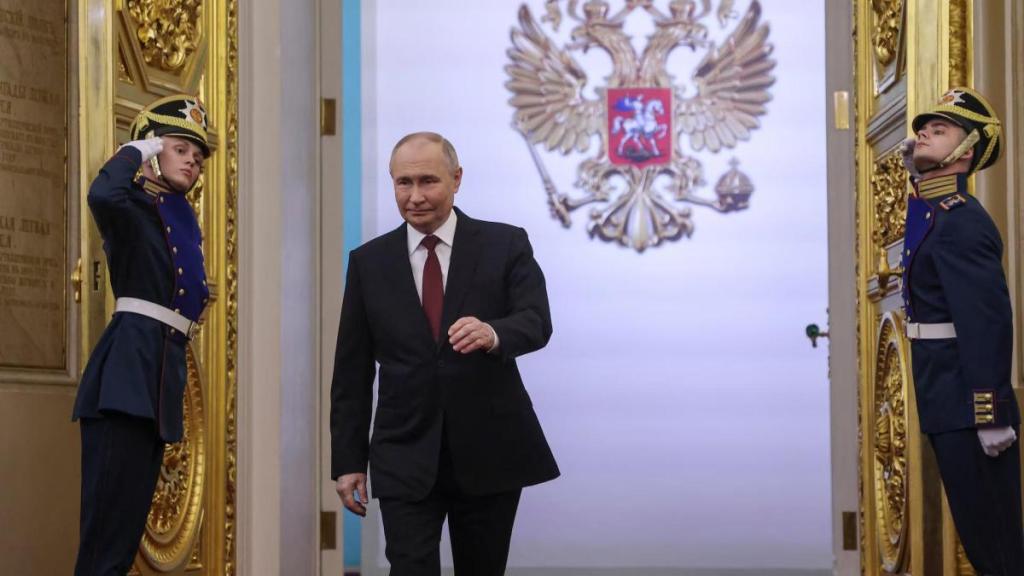On Tuesday, Russian President Vladimir Putin signed a revised nuclear doctrine, significantly altering Moscow’s approach to its nuclear deterrence strategy. The updated policy warns that any conventional attack on Russia, supported by a nuclear power, would be regarded as a joint assault on the Russian Federation. This revision, announced on the 1,000th day of Russia’s invasion of Ukraine, reflects heightened tensions with the West and underscores Russia’s growing reliance on nuclear threats amid its ongoing military struggle in Ukraine.
Background to the New Doctrine
The timing of the new doctrine is crucial. It follows President Joe Biden’s decision to allow Ukraine to use US-supplied ATACMS missiles to strike targets within Russia, escalating concerns in Moscow about the West’s growing involvement in the conflict.
Kremlin spokesperson Dmitry Peskov clarified that the revision was not a direct response to the US move but was updated to reflect the “current situation.” However, it’s clear that this shift in nuclear policy aims to reinforce Russia’s position, signalling to both its adversaries and allies that it is prepared to escalate its tactics, including nuclear threats.
Putin’s signing of this revised doctrine serves as a powerful reminder of the central role nuclear weapons play in Russia’s defence strategy, especially as its military offensive in Ukraine grinds on. The new policy emphasizes the unpredictability of Russia’s nuclear posture, warning that even a conventional military action supported by a nuclear power could trigger catastrophic consequences.
Key Changes in the Nuclear Doctrine
The central shift in the revised nuclear doctrine lies in its broadened criteria for when nuclear weapons could be used. Previously, Russia’s nuclear doctrine was more focused on retaliation against direct threats, particularly ballistic missile launches targeting its territory. The updated policy, however, takes a much broader view. It explicitly states that Russia would consider any conventional attack by a non-nuclear power, if backed by a nuclear state, as an act of joint aggression against Russia.
While this does not guarantee a nuclear response to every such scenario, it opens the door for a far more expansive interpretation of when nuclear weapons might be deployed. The doctrine’s language around “uncertainty of scale, time, and place” suggests that the Kremlin’s threshold for nuclear retaliation is less predictable, making it harder for adversaries to gauge when such a response might occur.
Triggers for Nuclear Weapons Use
One of the most significant aspects of the new doctrine is the expanded list of potential triggers for nuclear use. It specifies that Russia may resort to nuclear weapons in response to large-scale aerial attacks involving ballistic and cruise missiles, aircraft, drones, and other aerial threats. This is a notable shift from the previous version, which primarily focused on ballistic missile launches aimed at Russian territory or its allies. By broadening the criteria, the doctrine signals that Russia may not wait for an all-out nuclear strike to occur before taking drastic action.
Moreover, the updated policy stresses the potential for nuclear retaliation in defence of Belarus, a close ally of Russia. Belarusian President Alexander Lukashenko has allowed Russia to station troops and deploy tactical nuclear weapons on Belarusian soil, strengthening the ties between the two nations. The new doctrine makes it clear that any attack on Belarus, especially one involving the support of a nuclear power, would trigger Russia’s nuclear deterrence measures. This also ties Belarus more closely to Russia’s defence policies, reinforcing the idea that an attack on one would be viewed as an attack on both.
Decision-Making and Control
The revised doctrine also highlights the centralization of decision-making regarding nuclear weapons. As with previous versions, the ultimate authority to use nuclear weapons lies with the Russian president. This reflects the highly centralized power structure in Moscow, where Putin retains tight control over Russia’s military and strategic decisions. By giving the President sole responsibility for initiating nuclear action, the doctrine reinforces Putin’s role as the final arbiter in any situation that might lead to nuclear escalation.
Implications for Global Security
This updated nuclear doctrine comes at a time of heightened global instability, with Russia’s invasion of Ukraine, ongoing NATO support for Kyiv, and a general erosion of arms control frameworks. The doctrine’s broader triggers for nuclear use signal that Russia may not limit its nuclear response to only direct attacks, but could escalate in response to perceived threats, including those indirectly linked to NATO and its allies.
For the West, the revision is a clear signal that Russia is prepared to leverage its nuclear arsenal as a deterrent to prevent further escalation of the conflict in Ukraine. This underscores the delicate balance that global powers must maintain as they navigate the military and diplomatic tensions surrounding Russia’s invasion. While the new doctrine is framed as a defensive measure, its vagueness regarding the “uncertainty of scale” means that the international community could face a heightened risk of nuclear escalation if tensions continue to rise.


